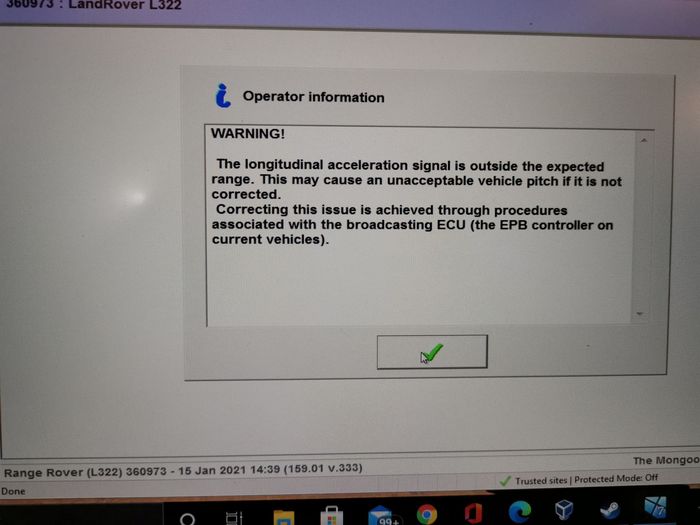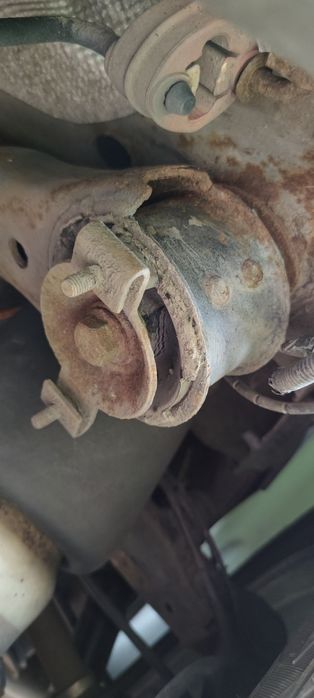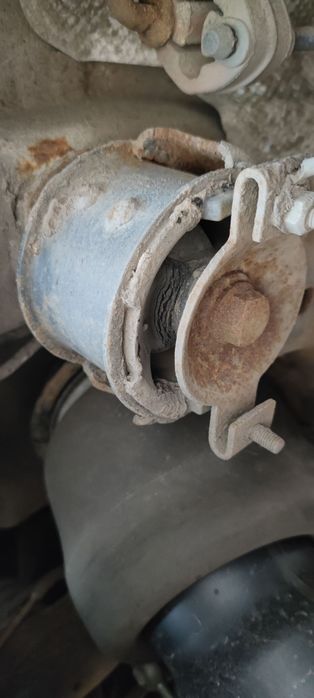 | Home > Technical (L322) > Help me out with the suspension on my 'famous' 4.4TDV8 L322! |
 
|
|
|
| LandyManSam Member Since: 10 Jul 2019 Location: Wild West Ireland Posts: 51  
|
It's not really a famous L322 - but you might have seen my videos recently on YouTube. (https://youtu.be/iJP5RwEriyc)
|
||
|
| Mikey Member Since: 10 Jan 2008 Location: Dundee Posts: 1885 
|
Has it ever had front struts/shocks?
|
||
|
| LandyManSam Member Since: 10 Jul 2019 Location: Wild West Ireland Posts: 51  
|
The fronts aren't very old - I think the date codes are 2017 or 2018, which would put them at between 40k and 50k miles covered roughly. The poor ride quality does seem to be mainly from the rear end of the vehicle, though it's difficult to tell. |
||
|
| LandyManSam Member Since: 10 Jul 2019 Location: Wild West Ireland Posts: 51  
|
I'll check the sensors for orientation. Regarding the IID adaptive damper calibration - can you explain how that works? Why is it that driving over a rough surface gives a different result to a stationary or smooth road? See reply above re. front shocks. |
||
|
| coopss Member Since: 21 Apr 2018 Location: Hampshire Posts: 281 |
I also have this. Except it usually happens 5-15 minutes into a journey, sometime straight away, which makes me think it’s something electrical
How did you read the values in IID tool? 1995 4.6 v8, green/tan (long gone) 2005 4.8iS X5, blue/black 2011 4.4 tdv8, black/black (gone) 2003 3.0d X5, Oxford green/black/manual 2021 p575 SVR, BR green/vintage tan |
||
|
| GraemeS Member Since: 06 Mar 2015 Location: Wagga area Posts: 2782 
|
The calibration process allows the ecu to determine how much to open the valves (varies the pwm duty cycle) on rough surfaces in order to provide a smooth ride, as detected by the 3 accelerometers mounted on the body. If the calibration surface is too smooth then the valves won't be opened enough on rougher surfaces and if too rough then the valves will be open too much on lesser surfaces resulting in inadequate damping. I tried several different surfaces and travel speeds on my initial calibration, finally settling on a stretch of road with minor surface irregularities at 80 kph then used the same stretch of road when recalibrating the next time. Mine's rear shocks were worst due to towing a van with a heavy ball weight but the fronts are now at the point where they're not doing a proper job. |
||
|
| QuebecTango Member Since: 06 Jan 2019 Location: Brighton Posts: 57  
|
Hi Sam,
|
||
|
| GraemeS Member Since: 06 Mar 2015 Location: Wagga area Posts: 2782 
|
The height sensor signals are extremely unlikely to support a 21W load which would therefore damage the height sensor. If the fault is with a height sensor then it will be that the sensor is sending incorrect values due being faulty, not a circuit continuity issue.
|
||
|
| QuebecTango Member Since: 06 Jan 2019 Location: Brighton Posts: 57  
|
I agree, I am suggesting to test the wire at each end disconnected from the module & sensors, sorry if that confused |
||
|
| LandyManSam Member Since: 10 Jul 2019 Location: Wild West Ireland Posts: 51  
|
Thinking about it, mine seems to be similar whereby the first couple of minutes of the journey are noticeably smoother. How strange! Did yours start doing this suddenly, or did it gradually get worse over time?
Ah, I thought it was the other way around - where a smooth calibration surface would give you a lower damping rate and a rough surface would give you a higher damping rate? Currently, mine is definitely OVERdamped over imperfections etc. I will try recalibrating on different surfaces but I'm not too confident it'll have much effect (going by my previous tries). R.e. the height sensors, is there a way to check what they are reading vs. the set height? Also - has anyone else heard of the 'longitudinal acceleration sensor' causing an incorrect vehicle pitch before?
I stuck my head under the back of the truck earlier and noticed that the subframe bushes look a little past their best-
Thanks all for the replies so far |
||||||||
|
| coopss Member Since: 21 Apr 2018 Location: Hampshire Posts: 281 |
That’s one of the accelerometers that affects the damper ECU. There are three I think and from memory this one is under the spare wheel cover.
|
||
|
| D3Jon Member Since: 15 Aug 2020 Location: Lincolnshire Posts: 575 
|
Great vids, been watching with interest! |
||
|
| D3Jon Member Since: 15 Aug 2020 Location: Lincolnshire Posts: 575 
|
The output voltages from the height sensors can be read with most tools, definetely with the IID - but you know that already right? So I must be mis-understanding your question. As you know, every height sensor will give a slightly different output voltage for a given height to another sensor. Hence the need to calibrate them upon replacement. If you want to check them, I'd raise / lower the vehicle whilst looking at the output. You could also inflate / deflate bags with the IID and look at the output. A better test, would be to disconnect the actuator arm and manually operate the height sensor throughout its range of motion looking at the output voltage with your scan tool. This should be in the range of 0-5v from memory. You're looking for a smooth output with no sudden spikes, similar to when diagnosing a TD5 accelerator pedal (which I'd think you're familiar with). Bit of a wild-card, but has someone fitting the wrong height sensor to this at some point? I recall from when I did one of mine that earlier cars with Halogen headlights have a different sensor to cars fitted with Xenon's. They have a similar plug, but more pins are used for the self-levelling xenon's. Jon 1992 RR Classic 3.9 efi Vogue 2014 Disco 4 HSE =================== Both my fatties now gone... Previous: 2011 L322 4.4 TDV8 Vogue SE /// 2002 L322 4.4 V8 HSE /// 2009 Discovery 3 2.7 TDV6 XS /// 2004 Defender 90 TD5 /// 1993 110 V8 Snatch Landrover /// 2005 Discovery 3 2.7 TDV6 SE (Aus) /// 1990 110 Isuzu 3.9 County (Aus) /// 1976 Series III Trayback (Aus) |
||
|
| GraemeS Member Since: 06 Mar 2015 Location: Wagga area Posts: 2782 
|
The height sensors with 6 pins are a twin height sensor used only on the later L322 whereby the 2nd height signal is used by the CVD ecu. However the height sensors used on the L494, L405 and later-released vehicles have only 1 height sensor/signal which is shared by height control and CVD control, being located within the one enclosure compared with the L322's 2 distinct modules.
|
||
|
 
|
|
| All times are GMT |
< Previous Topic | Next Topic > |
Posting Rules
|
Site Copyright © 2006-2025 Futuranet Ltd & Martin Lewis
![]()



